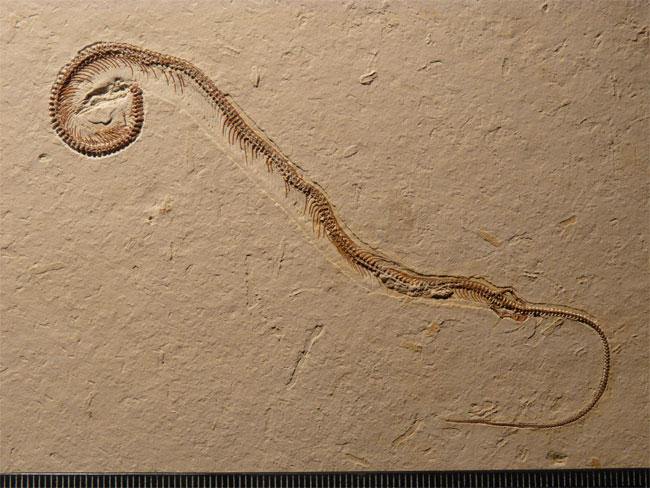 Tetrapodophis specimen. Credit: Dave Martill.
Tetrapodophis specimen. Credit: Dave Martill.
Craig Davies for Art-Sheep
A 113-million-year-old fossil from Brazil is the first four-legged snake that scientists have ever seen. A direct ancestor of modern snakes, this snake had arms and legs that were not used for walking but probably for hunting its prey.
It also argues the theory that snakes developed from marine reptiles, as it shows adaptations for burrowing, not swimming. According to Dr Nick Longrich from the University of Bath, “this is the most primitive fossil snake known, and it’s pretty clearly not aquatic.”
When he first saw photographs of the 19.5cm fossil, now named Tetrapodophis amplectus, Dr. Longrich was in awe as he was expecting to see something more ambiguous, instead of a snake with “advanced features” as he called its flexible jaw and spine and hooked teeth.
 Tetrapodophis catching a lizard. Credit: James Brown, University of Portsmouth
Tetrapodophis catching a lizard. Credit: James Brown, University of Portsmouth

Tetrapodophis forelimb. Credit: Dave Martill.

Tetrapodophis hindlimb. Credit: Dave Martill.









